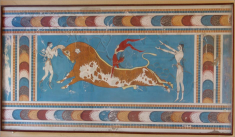Speaker
Description
The collision system size dependence of light (anti-)nuclei and (anti-)hypertriton production is investigated using the parton and hadron cascade (PACIAE) model plus dynamically constrained phase-space coalescence (DCPC) model in 10B+10B, 12C+12C, 16O+16O, 20Ne+20Ne, 27Al+27Al, 40Ar+40Ar, 63Cu+63Cu, 96Ru+96Ru, 197Au+197Au, and 238U+238U collisions at √sNN = 200 GeV. The yield ratios of deuteron to proton, helium-3 to proton, hypertriton to Lambda-hyperon are predicted for various collision systems. In this study, we find the yield ratios between anti-(hyper-)nuclei are significantly suppressed compared to the ratios between the (hyper-)nuclei. It is also interesting to see the strangeness population factor s3 shows a non-smooth dependence of
atomic mass number A around 12 to 27, which can be related to the relative size of the produced nuclei and the emission source of different collision systems. Our present study provides a reference for a upcoming collision system scan program at RHIC.
Details
Zhilei She
| Is this abstract from experiment? | No |
|---|---|
| Name of experiment and experimental site | N/A |
| Is the speaker for that presentation defined? | Yes |
| Internet talk | No |
